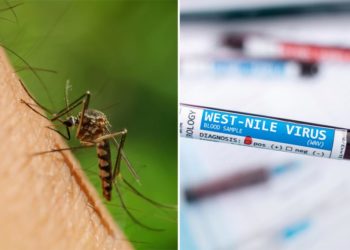A map shows where the U.S. struck three of Iran’s main nuclear sites on Saturday, bringing the U.S. directly into the conflict between Iran and Israel after speculation over whether America’s self-styled role as peacemaker-in-chief would embroil Washington in Israel’s large-scale attacks.
Trump said on Saturday evening that the U.S. had carried out “massive precision strikes” to take out Tehran’s nuclear enrichment facilities and its ability to make a nuclear weapon. Iran has since fired more missiles at Israel.
The strikes were a “spectacular military success,” Trump said. “Iran’s key nuclear enrichment facilities have been completely and totally obliterated.”
The U.S. struck Fordow, Natanz and Isfahan, Trump said.
Israel launched attacks on Iran’s nuclear facilities and scientists—as well as the country’s ballistic missile sites and other military assets—late on June 12 U.S. ET. Among those targets were Natanz, Iran’s most significant nuclear enrichment site, and Isfahan, to the southwest of Natanz.
But Israel could not effectively target Iran’s nuclear program at Fordow, which Iran built under a mountain south of Tehran.
Only the U.S.’s B-2 heavy stealth bombers and massive munitions work for that type of attack, experts said. An unnamed U.S. official told Reuters that B-2s were involved in the strikes on Saturday after the news agency reported that the U.S. had moved heavy bombers to the Pacific island of Guam.
The U.S. hit Natanz and Isfahan with Tomahawk submarine-launched cruise missiles, two senior Pentagon officials told CBS News.
Iran says its nuclear program is peaceful, but senior officials have publicly debated developing a nuclear weapon.
The United Nations‘ nuclear watchdog, the International Atomic Energy Agency (IAEA), said just ahead of the start of Israel’s strike campaign that Tehran was not cooperating with its nuclear obligations for the first time in 20 years. Iran said it would get a new enrichment site in a “secure location” up and running.
Israel and the U.S., as well as other countries allied with Washington, have insisted it is not acceptable for Iran to gain a nuclear weapon.
What Has Iran Said?
Iran’s supreme leader, Ayatollah Ali Khamenei, had threatened the U.S. with “irreparable damage” if Washington became involved in strikes on the country.
Iran’s foreign minister, Abbas Araghchi, said in the hours before the U.S. strikes that Washington’s involvement would be “very, very dangerous.”
“The events this morning are outrageous and will have everlasting consequences,” the minister said in later remarks posted to social media on Sunday.
Trump, in his own post to the Truth Social platform, said any Iranian retaliation against the U.S. would bring fresh American attacks “GREATER THAN WHAT WAS WITNESSED TONIGHT.”
Fordow, the Site Israel Couldn’t Reach
“A full payload of BOMBS was dropped on the primary site, Fordow,” Trump said in a post to Truth Social late U.S. time on Saturday.
Experts said it would likely take several of American GBU-57/B bombs—weighing in at a massive 30,000 pounds—to take out more than just the entrance to Fordow.
Manan Raeisi, an Iranian lawmaker in the city of Qom, close to the site, told the country’s semi-official Tasnim news agency that “critical infrastructure remains intact” at Fordow.
“What was hit was mostly on the ground and fully restorable,” Raeisi said. “Trump’s bluff about destroying Fordow is laughable.”
Israel’s president, Isaac Herzog, told the BBC on Sunday that Iran’s nuclear program “has been hit substantially.”
The IAEA said on Sunday it had not detected any increase in off-site radiation after the strikes on the three sites.
Iranian state media reported key nuclear sites had been evacuated ahead of U.S. attacks, with enriched uranium moved “to a safe location.”
Satellite imagery captured by Maxar, a space technology firm, on Thursday and Friday showed “unusual” vehicle activity at the entrance to the underground facility at Fordow.
The post Map Shows Where US Strikes Hit in Iran appeared first on Newsweek.




